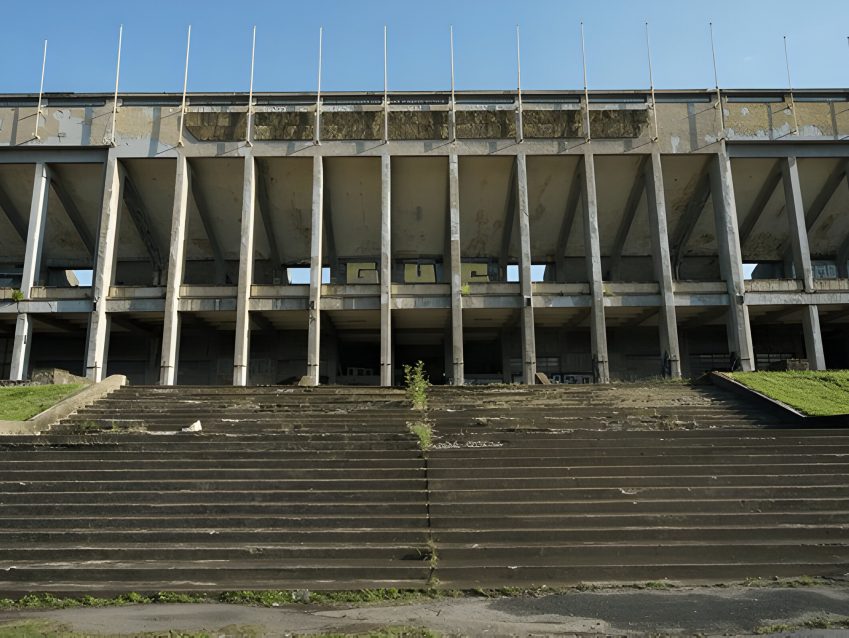Imagine a stadium so huge that it could hold a small city! Yet, the first part of the Strahov Stadium was completed as early as 1926! With a seating capacity of up to 250,000, it remains the largest stadium to date. It was constructed in a unique architectural style blending modernism with hints of ancient influences.
Initially, it was built to host Sokol gatherings, a Czech gymnastics movement aimed to promote not only physical education and patriotism. Its construction was part of a larger plan to create a sporting complex that would embody the ideals of Sokol (“Falcon“ in English).
The immense scale of the stadium is impressive. Upon entering, visitors were greeted by towering grandstands that seemed to stretch into infinity. The stadium´s layout was meticulously planned to provide excellent views from every angle. Standing at the center of this venue, it is easy to imagine the deafening cheers and roaring applause.
Throughout its history, the Strahov Stadium has witnessed countless monumental moments. It was used for numerous national and international sporting events, including gymnastics competitions, football matches, and athletics tournaments.
In 1932, the stadium saw its pinnacle moment when it hosted an international gymnastics gathering with over 200,000 participants, including Czechoslovakia’s president, Tomáš Garrigue Masaryk. The event became a symbol of national identity, showcasing the deep-rooted passion for sport in Czech culture.
Although primarily associated with sports, the stadium has also served other purposes over the years. During World War II, the occupying Nazis used the stadium for various purposes, including storing confiscated books and art, holding military parades and gathering Jews. Fortunately, the tables turned, and at the end of the war, two units of the US Army played an American football game there.
Another Sokol gathering was held there in 1948 to protest against the growing influence of communism after WW2. Soon after, the Sokol movement was dissolved, and the Spartakiads were introduced to promote the Communist regime. Willy-nilly, the Communist leaders had to use the help of the former Sokol leaders, because unlike them, they lacked the experience necessary to train such large numbers of people and organise such massive events. From 1955 until 1985 these mass synchronised exercise events were among the largest the world has seen until now. It is estimated that almost two million people took part in the first Spartakiad, including soldiers, children and workers. Unsurprisingly, images from all the Spartakiads were used in Communist propaganda around the world.
Fortunately, a renewed Sokol gathering was held at Strahov in 1994 after the Velvet Revolution, attended by the Czech president, Václav Havel. However, subsequent Sokol events took place in smaller stadiums.
Prior to that, in 1990, the stadium hosted a concert by the British rock band the Rolling Stones, attended by over 100,000 people, including the first Czech president. The stadium later hosted many other concerts, festivals and large public gatherings. Following plans to demolish the venue, AC Sparta Prague reconstructed part of the stadium in 2003, building new football pitches. It is still used as their training centre, but the grandstands and viewing platforms are in poor condition and require further renovation.
Although the heyday of the Strahov Stadium is long gone, it remains a cherished piece of history, standing as a testament to the enduring passion for sport. To appreciate the cultural heritage of the neighbourhood, we also recommend visiting the Strahov Monastery. Walking from there, you can also explore other beautiful buildings in the Castle District (Hradčany).


